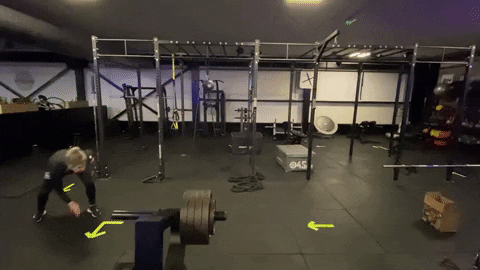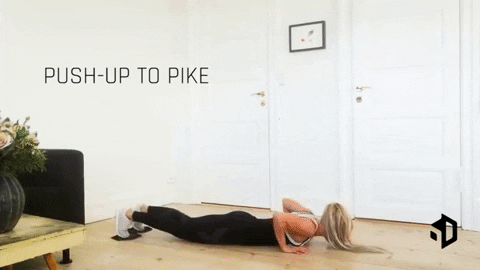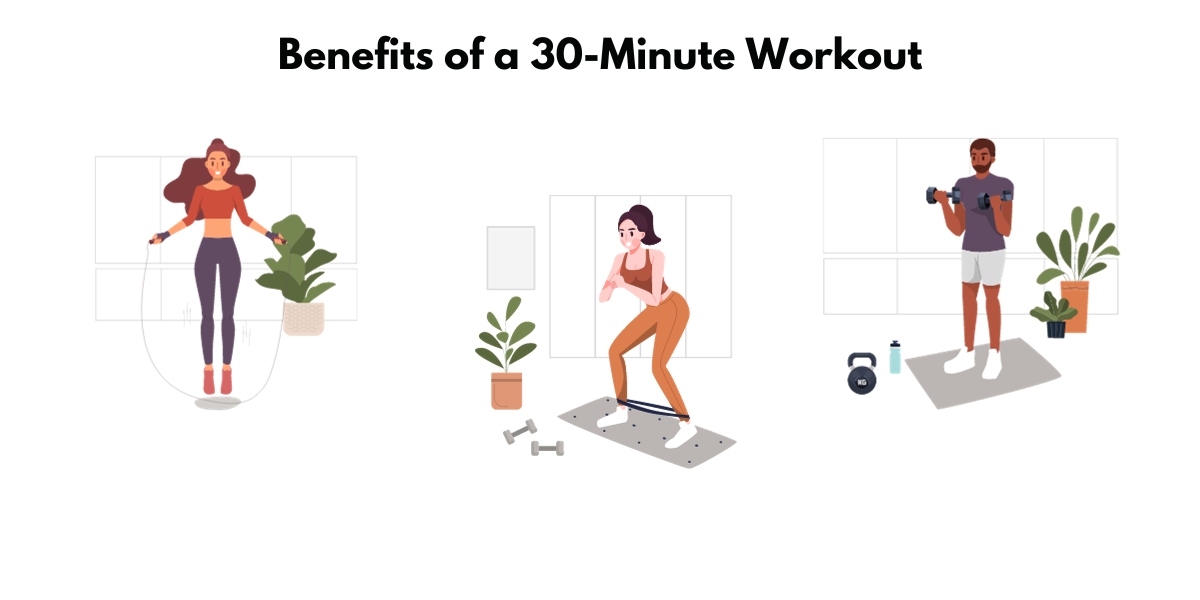30-Minute Strength Workout: Full Body Pyramid and Circuit Training
Exploring the Concept of a 30-Minute Strength Workout
NASM-certified personal trainer, Christine O’Leary Tordé, presents an innovative and efficient workout routine that merges cardio with strength training all in just half an hour. This vigorous session not only raises your heart rate but also works your muscles, maximizing the fitness returns from a short span. Interestingly, the afterburn effect of this workout keeps your metabolism elevated for up to 24 hours after the session, thus increasing its effectiveness even more.
The Importance of Pyramid and Circuit Training
Pyramid and circuit training workouts hold a crucial place in substantial fitness routines. Pyramid training is all about ascending and descending sets, which increase and then decrease the repetitions or weight during the course of your workout. This approach promotes muscle endurance, enhances strength, and improves cardiovascular fitness, making it an incredibly versatile and effective training style.
On the other hand, circuit training offers a series of exercises performed one after another with minimal rest in between. It contributes to improved muscular strength and endurance while also delivering cardiovascular benefits. Combining these methods in a single session ensures a well-rounded workout that maximizes fat-burning and muscle-building in less time.

Benefits of a 30-Minute Workout
Making the Most Out of Your Time
A 30-minute workout might sound short, but its effectiveness lies in the intensity, style of training, and consistency. Acclaimed fitness expert Anthony O’Reilly points out that the most efficient way to make use of this timeframe at the gym is by avoiding monotone activities like treadmill runs and instead focusing on high-intensity regimes like Pyramid and Circuit training. These exercise formats utilize different muscle groups in a high-intensity manner, making each second count and significantly enhancing your overall fitness.
Stepping Up Your Strength Game
Building muscle strength is critical for not just athletic performance but for daily physical functions as well. The ingenious amalgamation of pyramid and circuit training techniques in this 30-minute full-body workout can significantly boost your strength levels. The key lies in its strategy of progressive overload, explained by ACE-certified personal trainer Sivan Fagan – progressively and continually increasing the intensity of your routine for constant improvement in your physical performance. It ultimately raises your body’s endurance capacity, lets you accomplish more sets in less time, and presents you with visible strength progress over time.

The Complete Guide to Full Body Pyramid Training
What is Pyramid Training?
Pyramid training is a workout scheme that structures exercises in a way that adds or removes intensity with each set. According to NASM, there are three main types of Pyramid Training—Standard Pyramid, Reverse Pyramid, and Diamond or Triangle Pyramid. In the standard pyramid, reps decrease while weight increases across sets, while the reverse pyramid has increasing repetitions with decreasing weight. The diamond or triangle pyramid combines both methods; starts with the standard and moves to the reverse.
This type of training is highly regarded in the fitness realm for its scalability and flexibility, allowing users to adjust the intensities according to their capabilities. Notably, it offers an ideal balance of strength, endurance, and volume training, targeting various aspects of fitness.
How to Design a Full Body Pyramid Workout
Designing a full-body pyramid workout demands a thoughtful selection of the exercises for effectiveness across your body’s major muscle groups. This approach, as espoused by renowned fitness expert Lindsey Bomgren, involves five compound exercises performed at timed intervals.
Here are the steps:
- Choose five compound exercises that target your whole body—legs, chest, back, and arms.
- Set timed intervals of work and rest—for example, 30 seconds of performing as many reps as possible, followed by 30 seconds of rest.
- Structure the workout in a pyramid format—start with the first exercise, then add on additional moves while continuing to perform the earlier ones, and eventually start removing the moves in the same order, creating an ‘up and down’ routine.
By stacking exercises in such a manner, you not only challenge your endurance but also efficiently work out all your muscles within a limited timeframe.
To modulate difficulty, you could consider workout modifiers or decrease weights as you start to fatigue, as suggested by Bomgren.

Your Ultimate 30-Minute Strength Workout Plan
Tools Required for the Workout
To perform the 30-Minute Strength Workout with [Full-Body] Pyramid and Circuit Training, you will need a few essential tools:
- Exercise mat. This will provide cushioning for your body while doing floor work.
- Pull-up bar. This will be used for upper body exercises.
- Bench or chair. This is necessary for certain exercises, like step-ups or tricep dips.
- Various weighted dumbbells. These will help you to incrementally increase your strength at your own capacity.
- Medicine ball. This tool offers various options for full-body movements and strengthening exercises.
- Step or staircase. Used for cardiovascular exercises like step-ups or stair runs.
Remember, before you start your workout, ensure you have all the required tools handy to avoid breaks and to maintain your workout’s intensity and flow.
Optional Equipment:
- Kettlebell. It is optional but beneficial for enhancing a wide range of workouts through dynamic movements.
Most of these items are common pieces of gym equipment that can also be found in many home gym setups. They provide you with a comprehensive strength training session right in your own home!
Step-by-Step Instructions
First, start off with a 5-minute dynamic warm-up to prepare your body for the following intense workout. You can include exercises like jumping jacks, air squats, and jogging on the spot.
Here is the ultimate 30-Minute Strength Workout Plan:
- Dumbbell Squat Press: Stand with your feet hip-width apart, a dumbbell in each hand at shoulder level. Lower into a squat, push back up, then press the dumbbells overhead. Do this for 30 to 60 seconds.
- Push-Ups: Get into plank position and lower your body to the floor, keeping your elbows tucked in. Push up to return to the start. Perform this move for 30 to 60 seconds.
- Bent-over Row: Hinge at the hips with dumbbells in your hands, palms facing your torso. Bend your elbows to pull the weights to your sides, then slowly lower them back down. Continue this for 30 to 60 seconds.
- Bulgarian Split Squat: Stand lunge-length in front of a bench. Hold a dumbbell in each hand, and rest the top of your left foot on the bench behind you. Lower your body until your rear knee nearly touches the floor and your front thigh is parallel to the floor. Push back up to the starting position. Repeat on the other side and do this for 30 to 60 seconds.
- Tricep Dips: Sit on a bench or chair, hands next to thighs, knees bent. Push off the step, and bend the elbows into a dip. As you press up, extend the right leg, reaching for the toe with your left hand. Lower and repeat on the other side for 30 to 60 seconds.
- Finally, finish with a 5-minute cool down with stretching exercises to help your body recover.
While executing this plan, remember to maintain the correct posture for each exercise and never compromise form to lift heavier weights.
Always listen to your body—if a weight or movement is too challenging, adjust it accordingly. It’s better to do fewer reps with perfect form than many with poor form. This 30-minute workout plan is flexible, so feel free to tweak and customize it according to your fitness level and goals.

Advanced 30-Minute Workouts for Experienced Gym Goers
Pushing Boundaries: Full Body Dumbbell Workouts
For those who are more advanced or looking to take their workout to the next level, a full-body dumbbell workout can be effective. Lindsey Bomgren’s Full Body Dumbbell Workout emphasizes on all major muscle groups over five circuits. Each circuit includes three exercises formatted in what Lindsey calls an A/B/A style.
The key here is to perform Exercise A for 30 seconds, followed by Exercise B for 45 seconds, and then return to Exercise A again for 30 seconds. With a constant 10-second rest interval between moves, this setup keeps your heart rate high and muscles engaged. The goal is to repeat each circuit twice, building strength and endurance through the constant engagement of full-body exercises.
This technique of switching between exercises targets different muscle groups, allowing some to rest while others work, leading to a more efficient and challenging workout.
Through full-body dumbbell workouts, you can expect to boost your metabolic rate, increase calorie burn, enhance muscle growth, and build overall strength. It’s a tough program, sure, but the results make the effort absolutely worth it.
Remember, the key to pushing boundaries in your workout lies in persistence and consistency over intensity and weight.
Taking it to the Next Level: Upper Body Circuit
For seasoned athletes, an upper-body circuit workout carries the potential to propel their strength and endurance to new heights. Renowned fitness model and bulk ambassador Alex Crockford suggests a comprehensive upper body workout that targets every major muscle group in your arms, chest, and back.
Here is a step-by-step guide to the upper body circuit:
- Push-Ups: Do as many reps as you can using the correct form for 60 seconds, resting only when necessary.
- Dumbbell Row: Using a suitable weight, perform 12-15 reps of rows for each arm.
- Overhead Press: Execute 12-15 reps of overhead presses using dumbbells appropriate to your strength level.
- Bicep Curls: With your chosen weights, complete 12-15 reps of bicep curls.
- Tricep Dips: Perform tricep dips on a bench till failure.
- Pull-Ups: Finish off the circuit with as many pull-ups as you can.
Crockford recommends cycling through the circuit with minimal rest for a substantial cardiovascular element. Repeat the sequence as many times as possible within your 30-minute window.
This upper-body circuit targets all essential muscle groups, taking your strength training to a higher echelon, and concurrently keeping the tediousness at bay. These workouts not only test your strength but also establish greater muscular endurance over time.
Please remember that correct form and technique are critical to get the most out of these exercises and prevent any risks of injury. Consult a fitness professional to guide you in achieving the perfect form for effective results.

Tips and Suggestions to Get the Best out of Your Workout
Pre-Workout Nutrition: Fuel Your Body Right
Fueling your body right before a workout is just as important as the workout session itself. Nutrition plays an essential role in optimizing the effects of physical activity and can help your body perform better and recover more rapidly. Pre-workout nutrition, specifically, provides the energy you need to execute your workout effectively.
According to the American College of Sports Medicine, you should aim to consume a meal rich in carbohydrates, moderate in protein, and low in fats and fiber around 2-3 hours before your workout. Carbohydrates provide fast-acting glucose to energize your muscles, while protein aids in muscle recovery and growth.
Some ideal options include:
- Greek yogurt with berries and honey
- Wholegrain toast with banana and a dash of cinnamon
- Oats loaded with fruits
- Protein shake with a piece of fruit
Going into your training with the right nutrients in your system can make a huge difference to your performance and results. A well-rounded, nutrient-dense meal precedes a well-drilled workout session! Remember to stay hydrated too; start sipping water 2-3 hours before hitting the gym.
Consult with a dietitian or nutritionist for advice tailored specifically to your dietary needs and training regimen.
Post-Workout Recovery Techniques
Post-workout recovery is often overlooked but it plays a crucial role in the effectiveness of your strength training regime. Utilize the following recovery techniques to rapidly recuperate and gain maximum benefits from your 30-minute strength workout.
- Protein Intake: After a strenuous workout, your body needs protein to repair muscle tissues and stimulate growth. According to the International Society of Sports Nutrition, it’s beneficial to consume high-quality protein within two hours after working out. Protein shakes, grilled chicken with veggies, or Greek yogurt with nuts can serve as ideal post-workout meals.
- Hydration: Our bodies lose water and electrolytes during workouts. It’s important to replenish these vital elements by consuming an adequate amount of fluids post-exercise.
- Rest and Sleep: Giving your muscles time to heal after a rigorous workout session should be a priority. Make sure to get good quality sleep and take complete rest days, as recommended by your trainer or fitness consultant.
- Stretching and Cool-down: Spend at least 5-10 minutes cooling down after your workout to return your heart rate to its regular rhythm. Gentle stretching post-workout can enhance flexibility and ease muscle tension.
- Active Recovery: Activities like light yoga or a leisurely walk on your rest days can enhance blood circulation, aiding in muscle recovery.
- Massage or Foam Rolling: These techniques can reduce muscle tension and promote quicker recovery.
Remember, consistent strength training delivers the best results over time, so taking good care of your body after each training session becomes vital. Treat your body right after a workout, and you’ll be ready and energized for your next session.

FAQ Section
Why Are 30-Minute Workouts Effective?
The efficiency of 30-minute workouts lies in the right amalgamation of intensity and strategy. High-intensity sessions that employ compound movements can stimulate various muscle groups, spike your heart rate, and engage your core – all within the span of half an hour. Moreover, studies have proven that it helps in fat loss and maintaining muscle mass.
Intensity turns out to be the epicenter of the success of 30-minute workouts, as certified by the American College of Sports Medicine. It’s not about the length of a training session per se, but rather how well it’s used. The effectiveness of a session is not predicated entirely on its duration; intensity, frequency, and the type of exercises play crucial roles too.
Under the right conditions, 30-minute workouts can prove to be as, or even more fruitful in terms of stamina, strength, and weight loss, than hour-long sessions. Shorter, more efficient workouts also contribute to better adherence, consistency, and sustainability in a fitness regimen — necessary for long-term health and fitness outcomes.
Getting in a quick 30 minutes of training can jumpstart your metabolic rate, burn fat, and also provide a boost of energy and mood thanks to the endorphin release during intensive workouts.
Remember, your fitness journey is unique to you – the ultimate goal is to integrate regular workouts into your weekly routine, whether they’re 30 minutes or an hour long.
Can Beginners Do Pyramid and Circuit Training?
Absolutely! Both pyramid and circuit training can readily be adapted to suit beginners. In fact, they are great formats for newbies to start with because they offer flexibility in terms of workout intensity and movements. Trainers can adjust the weight, repetitions, and rest periods in a way that caters to individual capabilities.
In pyramid training, beginners can get started with lighter weights and increase the load gradually as their strength improves. Similarly, more rest can be incorporated between circuits to allow adequate recovery time.
Circuit training offers a diverse array of exercises even within a single session, thereby ensuring beginners get a whole-body workout without getting bored with repetitive exercises.
If properly implemented, these workout styles can improve fitness levels, boost endurance, and strengthen muscles from the initial stages of your fitness journey.
Starting out at a lower intensity and gradually increasing it over time, along with proper form, is key when it comes to strength training for beginners. It’s always wise to kick off any new workout regimen under professional supervision or consultation in order to avoid injuries and maximize results.
Remember, everyone starts somewhere, and each step taken is a step towards better health and fitness!
- Maximize Physical Health & Wellness: A Quickstart Guide - February 15, 2025
- 30-Minute Strength Workout: Full Body Pyramid and Circuit Training - December 29, 2023


